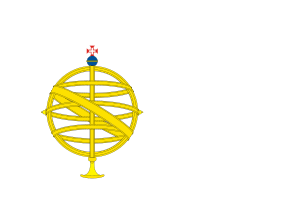State of Brazil
| State of Brazil | ||||||||||||||
| Estado do Brasil | ||||||||||||||
| State of the Portuguese Empire | ||||||||||||||
| ||||||||||||||
| ||||||||||||||
.svg.png) The State of Brazil in 1709 | ||||||||||||||
| Capital | Salvador (1645-1763) Rio de Janeiro (1763-1815) | |||||||||||||
| Languages | Portuguese | |||||||||||||
| Religion | Roman Catholicism | |||||||||||||
| Government | Absolute Monarchy | |||||||||||||
| Monarch | ||||||||||||||
| • | 1621-1640 | Philip IV of Spain (Philip III of Portugal) | ||||||||||||
| • | 1750–1777 | Joseph I of Portugal | ||||||||||||
| Governor General/Viceroy | ||||||||||||||
| • | 1621 | Luís de Sousa | ||||||||||||
| • | 1806 | Marcos de Noronha e Brito | ||||||||||||
| History | ||||||||||||||
| • | End of hereditary captaincies | 1549 | ||||||||||||
| • | Transference of the capital to Rio de Janeiro | 1763 | ||||||||||||
| • | Inconfidência Mineira | 1792 | ||||||||||||
| • | Transfer of the Portuguese Court to Brazil | 22 January 1808 | ||||||||||||
| • | Elevation of Brazil to Kingdom | 16 December 1815 | ||||||||||||
| Currency | Portuguese Real | |||||||||||||
| ||||||||||||||
The State of Brazil (Portuguese: Estado do Brasil) was one of the states of the Portuguese Empire, in the Americas during the period of Colonial Brazil.
History
In 1621, the Governorate General of Brazil was separated into two states, the State of Brazil and the State of Maranhão. The state was created in June 13, 1621 by Philip II of Portugal.[1]
With the creation of the state, Portuguese America now had two administrative units: the State of Maranhão, with its capital in São Luís, Maranhão, and the State of Brazil, whose capital was São Salvador.
The State of Brazil became a Viceroyalty in 1763, when the capital of the State of Brazil was transferred from Salvador to Rio de Janeiro.
Composition
The State of Brazil originally included 12 of the original 15 captaincies, all except Ceará (which became subordinate to Pernambuco later) and Maranhão, two parts, which included the subcaptaincy of Para west of the Tordesillas Line at that time (north to south):
- Captaincy of Rio Grande de Norte
- Captaincy of Paraíba (southern Rio Grande & Itamaraca)
- Captaincy of Pernambuco
- Captaincy of Bahia
- Captaincy of Ilhéus (became a comarca of Bahia in 1761)
- Captaincy of Porto Seguro
- Captaincy of Espírito Santo
- Captaincy of Rio de Janeiro (São Tomé and São Vicente first section)
- Captaincy of Santo Amaro
- Captaincy of São Vicente (second section, later renamed Captaincy of São Paulo e Minas de Ouro)
- Captaincy of Santana
Captaincies created by the state
- Captaincy of Alagoas 1817 from Pernambuco
- Captaincy of Ceará 1799 re-split from Pernambuco (previously existed as one of 15 original donatary captaincies)
- Captaincy of Goiás
- Captaincy of Mato Grosso
- Captaincy of Minas Gerais
- Captaincy of São Paulo
- Captaincy of Sergipe 1820 from Bahia
- Captaincy of Rio Grande do Sul (from region of Rio Grande de Sao Pedro)
- Captaincy of Santa Catarina


